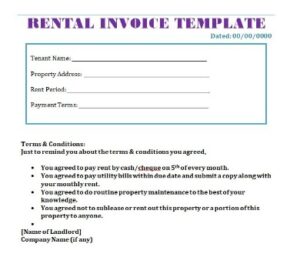
The transportation and logistics industry is a powerhouse, keeping the world’s goods moving efficiently. But behind the scenes, managing the financial health of your transportation business can feel like navigating a winding road without a map. Here’s where a well-defined chart of accounts for transportation and logistics (car rental, trucking, etc.) comes in – your roadmap to financial clarity and informed decision-making.
The business should decide what accounting reports it needs and then provide sufficient account codes to allow the report to be produced. We also offer several services aiming to improve your company’s accounting and bookkeeping routine. Let’s not forget about gas expenses, either; even if the price of gas is being charged to the client, those charges should be recorded as a Cost of Goods Sold account. For example, transportation management software, also known simply as trucking software, is a must-have for owner-operators. free cash flow from ebitda It serves as a digital hub and tax center from which you can manage all of your paperwork and filing responsibilities. The cash basis involves recognizing revenues when you receive payments and deducting expenses when you pay them.
These days, there’s software designed how do you record a dividend payment to stockholders for asset management that could help you measure fuel use, mileage and vehicle condition. You can then use this information to estimate daily, weekly or even monthly costs of using your van. Managing assets regularly can help you see if your assets lose value over time. To wrap it up, the COA is crucial for businesses to handle their money matters.
#3 – A service company

It’s the total money generated from these activities before deducting any expenses. As mentioned above, equity is one of the so-called balance sheet accounts, as it appears in the balance sheet. Equity is listed alongside liabilities, representing the shareholders’ stake in the company’s assets. The total equity amount reflects the company’s net worth or book value, which is the value of the assets minus the liabilities. The basic set of accounts is similar for all businesses, regardless of the type, size, or industry.
- The important point to remember is not to over complicate the chart of accounts.
- The revenue accounts appear based on the source of where the income comes from.
- Remember, it can be surprisingly hard to catch up on trucking records once you’ve fallen behind.
- Every transaction affects at least two accounts – one gets debited and another credited.
Stick to International Financial Reporting Standards (IFRS)
As mentioned, besides the standard five accounts, the chart of accounts may contain additional accounts, created for the sake of more granularity or to cater to a business’s particular needs. They can vary, but the most typical here are the COGS, gains and losses, and other comprehensive income accounts. When speaking of revenue, we usually mean the income a company earns from its primary business activities, such as selling goods or providing services.
How to start a babysitting business
Inefficient accounting software could fail to record valuable information you conversion method of single entry system or transaction approach need to make informed decisions about your business. The COA has been a fundamental component of accounting systems for centuries, evolving with accounting practices. While we can’t name the exact date when it became a standard accounting practice, we can trace its evolution through history – from tally sticks to accounting software.
Think of it as your business’s financial GPS, guiding you through the intricate terrain of income, expenses, assets, liabilities, and equity. Each account within the chart serves as a signpost, categorizing all your income (revenue) and expenses into specific accounts, providing a crystal-clear picture of your financial well-being. Truckers have often been referred to as the backbone of the American economy, and just as the economy needs a strong backbone to run smoothly, so does a QuickBooks file or any other accounting software. You can document trucking costs manually, but connecting your business accounts to accounting software is much easier. It can track and categorize your expenses automatically, though you may need to keep some supplemental records. As a trucking business owner, you should keep records of all your expenses and the documents that support them, such as receipts and account statements.
In 1494, an Italian mathematician, Luca Pacioli, wrote a book providing suggestions of how merchants could keep their records. It was like the first try to introduce double-entry bookkeeping, being a significant milestone. It brought the concept of recording transactions with corresponding debits and credits, allowing for more accurate financial records.
The advent of computers in the latter half of the 20th century changed accounting practices. Computerized accounting systems facilitated the creation and management of extensive charts of accounts. Accounting software allowed for greater flexibility, customization, and efficiency in managing financial data. Plus, keeping an eye on different expense types helps the company control its costs and ensure money is spent where it matters most. And when it comes to audits (those thorough checks of financial records), having a clear COA makes everything a lot easier, keeping everyone happy and following the rules. Accounting software can facilitate standardization, providing pre-defined templates that align with generally accepted accounting principles (GAAP).